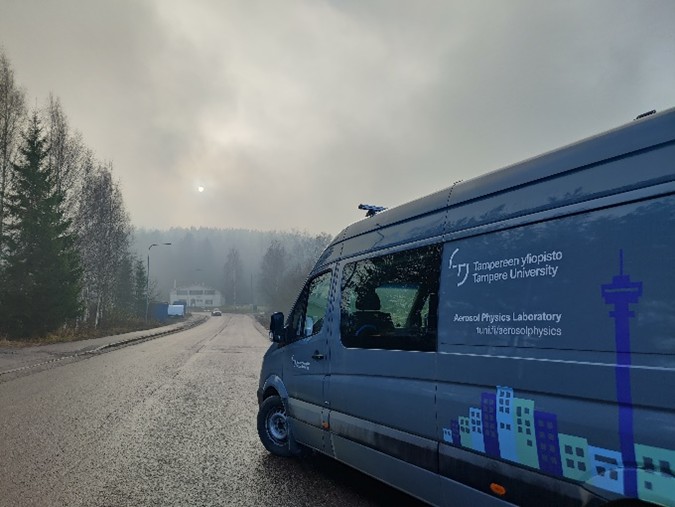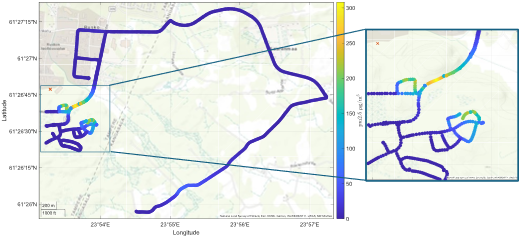Air Quality Implications of a Waste Treatment Facility Fire Measured with a Mobile Platform (ACTRIS-FI)
Published: 28, March, 2025

On November 5th, 2024, a large fire broke out at a waste management facility in Tampere, Finland. The fire was extensive, burning for several days and raising concerns about its impact on local air quality. In response, the Aerosol Physics Laboratory at Tampere University was requested to assess the air quality effects of the fire.

Measurements commenced on November 6th using the Aerosol and Trace Gas Mobile Laboratory (ATMo-Lab), an exploratory platform that is part of the INAR RI (Integrated Atmospheric and Earth System Research Infrastructure). The primary objectives of the measurement campaign were to quantify particle concentrations and to evaluate the spatial distribution of smoke, with particular attention to nearby residential areas. Data collection continued for four days, concluding on November 10th when the fire was largely extinguished, and the emergency warning for surrounding areas was lifted.
The ATMo-Lab was equipped with instruments capable of continuous measurements at a time resolution of 1-20 seconds, facilitating both mobile and stationary sampling. Air was sampled from above the windshield of the vehicle, allowing real-time analysis of smoke plumes at various locations.
The measurements revealed a significant degradation in air quality due to the fire. On Thursday, November 7th, PM2.5 concentrations in the residential area of Lintuhytti (highlighted on the map) reached levels exceeding 200 µg/m³. This value was nearly 100 times higher than the background concentration for the area, highlighting the severe impact of the fire on local air quality.

The results were reported to the incident command center and contributed to communication efforts and decision-making related to the situation. This rapid response effort provided critical real-time data that supported effective management and public information during the emergency.
Acknowledgments: Atte Ojala & Panu Karjalainen, Tampere University